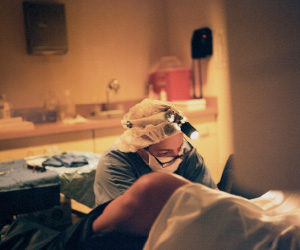The human papillomavirus, or HPV, is so common that 80% of men and women will play host to it by the age of 50. Nicola Davies-Laubscher finds out more
 HPV is a group of more than 100 related viruses that is almost as widespread as the common cold. It’s a contagious sexually transmitted infection (STI) and anybody sexually active can get it. The most common way of transmission is via skin-to-skin contact during sexual intercourse with an infected person.
HPV is a group of more than 100 related viruses that is almost as widespread as the common cold. It’s a contagious sexually transmitted infection (STI) and anybody sexually active can get it. The most common way of transmission is via skin-to-skin contact during sexual intercourse with an infected person.
Like many STIs, genital HPV infection often presents few or no symptoms. This explains its prevalence, as most people with an HPV infection do not know that they are infected and therefore do not take any special precautions to prevent transmission.
While most infections do not result in serious illness – and usually clear up within a year or two – there are HPV-related diseases everyone needs to be aware of.
HPV and cancer
Cervical cancer is the most common HPV-related disease and is one of the leading causes of death of women in developing countries. According to the Cancer Association of South Africa, one in 42 South African women will get cervical cancer.
Two particular strains of HPV (16 and 18) are considered ‘high risk’ because they cause abnormal cell changes that can lead to cancer of the cervix. If the body manages to get rid of the HPV infection, any abnormal cells will return to normal. However, if the body does not clear the infection, the cells in the cervix will continue with their abnormal changes, which will eventually result in cervical cancer.
According to the World Health Organisation, it should take 15 to 20 years for women with normal immune systems to develop cervical cancer. In women whose immune systems have been compromised – by untreated HIV, for example – it can take as little as five to 10 years.
Treatment and prevention
A positive HPV test result does not necessarily mean that a woman needs immediate treatment, but it does place her in a high-risk category, because she has more chance of experiencing cervical-tissue changes. A yearly Pap smear will detect any abnormal cells in the cervix, but the most effective way of preventing HPV infection in the first place is to vaccinate against it.
‘There are two HPV vaccines currently available in South Africa: Gardasil and Cervarix,’ says registered nurse Conny Fraser. ‘Both cover the important strains of HPV that can cause cervical cancer. The vaccines are administered in three injections over a six-month period.
‘Girls need to have the vaccine before they are sexually active and worldwide it’s administered between the ages of nine and 12. The South African govern-ment’s HPV vaccination campaign is directed at Grade 4 girls. Locally, the focus is on vaccinating young girls, but overseas, we see boys being vaccinated too to prevent cancer of the penis or anus,’ says Conny. ‘This needs to be encouraged here as well.’
Get tested
The World Health Organisation recommends that sexually active women have a routine Pap smear to screen for abnormal cervical cells annually, starting when they’re 30 years old. Treatment for cervical cancer includes cryotherapy (where-by the abnormal tissue on the cervix is destroyed by freezing it), surgery, radiotherapy and chemotherapy.
Further preventive interventions for boys and girls include…
• Education about safe sexual practices, including delaying the start of sexual activity
• Promoting condom use for those already engaged in sexual activity
• Warning about tobacco use and the link between smoking and various cancers, including cervical cancer.
Risky business
Factors that increase the risk of HPV and development of cervical cancer include:
• Becoming sexually active
at an early age
• Having multiple sexual
partners
• Using tobacco
• Having an immune system that is weakened.





